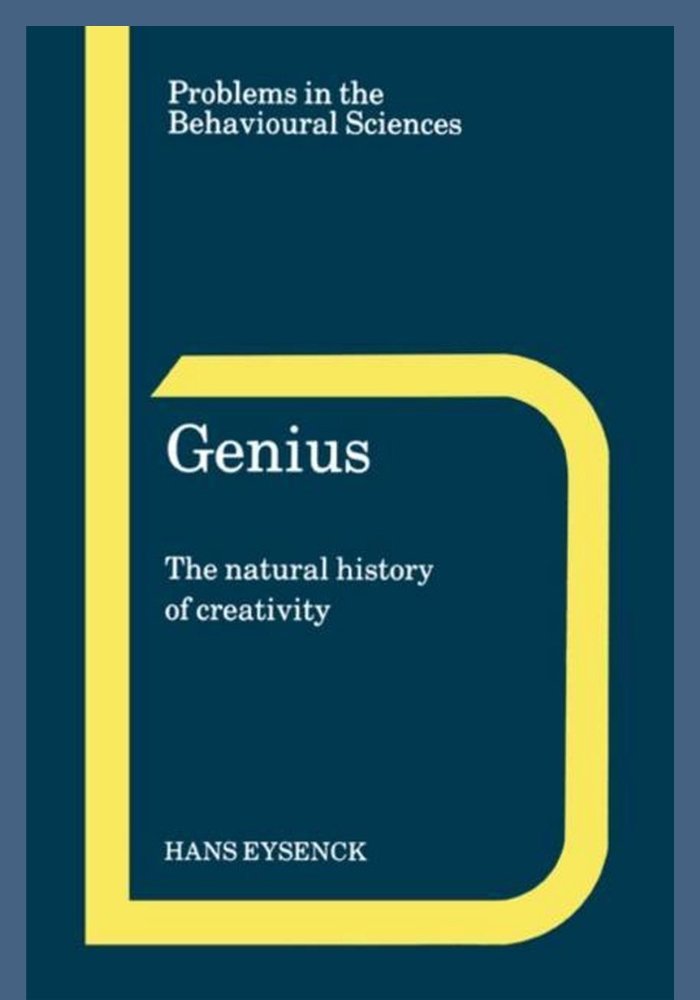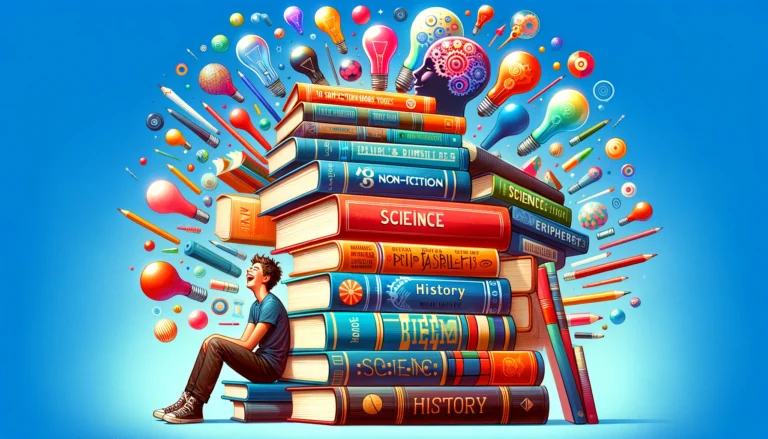Introduction
Hans J. Eysenck’s book, “Genius: The Natural History of Creativity,” examines the intricate relationship between nature and nurture in shaping what society often mislabels as ‘genius.’ The book delves into how intellect and personality intertwine, challenging our oversimplified views of genius. Eysenck’s narrative is not merely academic but also deeply engaging, prompting readers to rethink their understanding of creativity and genius. He compels us to shed old biases and adopt a new perspective on the roots of creative genius.
The Heart of the Matter
At its core, Hans J. Eysenck’s book navigates the complex terrain of genius, blending science with psychology to uncover the roots of brilliance. He explores the genetics underlying brilliance and examines the personality traits that foster creativity, illustrating how these elements synergistically spark genius. The book details the dynamic interplay between raw intelligence and innovation, showing how they collectively propel genius. Eysenck also scrutinizes the well-documented connections between genius and madness, offering a nuanced understanding of their interrelation. Additionally, he discusses how societal influences either nurture or suppress extraordinary talent, emphasizing the impact of cultural and environmental factors.
Nature vs. Nurture in Genius:
Eysenck dives into the nature versus nurture debate, emphasizing that while environment shapes us, there’s a significant genetic basis that constructs the framework of genius. His well-supported argument suggests that the seeds of creativity are often innate, flourishing under the right conditions.
Personality Traits of the Highly Creative:
Eysenck paints a vivid portrait of history’s most creative minds, focusing on traits like openness to experience, balanced ambivert tendencies, and a high tolerance for ambiguity. These traits are not just characteristics; they are essential catalysts that encourage creative individuals to explore and innovate, propelling them toward groundbreaking achievements.
The Role of Intelligence in Creativity:
Eysenck questions the traditional belief that higher intelligence automatically leads to greater creativity. He argues that while a high IQ provides essential tools like advanced problem-solving abilities and sophisticated abstract thinking, it is not the sole determinant of creative genius. Instead, Eysenck highlights that true creativity emerges from unconventional thinking and a unique perception of the world, characteristics that distinguish genuine geniuses from the merely intelligent. This perspective underscores the complexity of creativity, positioning it beyond mere intellectual capacity.
Psychopathology and Creativity:
One of Eysenck’s most provocative assertions is that the line between genius and madness is not just thin but blurred. He boldly states, “The sane man is simply a better-adjusted madman,” urging us to reevaluate our conventional views of sanity and creativity. This concept challenges us to consider whether extraordinary creative output is often linked to those walking a fine line with their mental health. Eysenck suggests that the intense fire of creativity might indeed burn brightest among those navigating the precarious tightrope of mental health, prompting a deeper exploration into the complex relationship between creative brilliance and psychological extremes.
Societal Recognition of Genius:
Eysenck broadens his analysis to explore how societal factors—from shifting cultural norms to historical contexts—influence our recognition and appreciation of genius. He emphasizes that genius does not exist in isolation; it is significantly shaped by its societal environment. Like a flower in a garden, the development of genius depends on whether it is nurtured or overlooked by the prevailing cultural, social, and historical conditions. This perspective underlines the role of society as either a cultivator or a stifler of extraordinary talent, highlighting the dynamic interaction between individual potential and collective influence.
Through My Lens
Reading Eysenck’s work felt like being handed a map to a hidden treasure, revealing insights into genius and creativity that challenged and expanded my understanding. The book not only contested my preconceived notions but also nudged my beliefs toward new horizons, prompting deep introspection into how creativity manifests in myself and those I admire. For instance, seeing traits like resilience in adversity mirrored in colleagues has been enlightening.
One poignant quote from the book, “Creativity is not the finding of a thing, but the making something out of it after it is found,” beautifully encapsulates the essence of creativity as a transformative process. This idea aligns closely with Eysenck’s thesis, emphasizing that creativity involves not just discovery, but the innovative transformation of ideas into impactful, distinct entities. This reflection on creativity reminds us that our creative potential is not just about what we find but how we sculpt and interpret those findings into meaningful contributions.
The Echoes of Genius
Strengths and Weaknesses: Eysenck’s work, while groundbreaking, is not without its critics. Some argue that his emphasis on genetic determinism might oversimplify the complex interplay between genetics and environment in shaping creativity. Additionally, his exploration of the links between psychopathology and creativity remains controversial, as it challenges traditional views on mental health and creative expression, provoking robust academic debates.
Applying the Insights: To harness Eysenck’s insights in our daily lives, we must actively recognize and embrace our diverse creative potentials, understanding that genius can manifest in various forms across different fields. We should strive to create environments that nurture creativity, whether at home, in the workplace, or within the community. This involves supporting policies that encourage innovation, promoting educational curricula that emphasize creative thinking, and fostering a home environment where creativity is actively encouraged and celebrated. By taking these steps, we facilitate a culture where creativity can truly flourish, reflecting Eysenck’s vision in practical, impactful ways.
Conclusion: The Genius Within Us All
In conclusion, Hans J. Eysenck’s “Genius: The Natural History of Creativity” serves as a mirror, reflecting the complex ways in which creativity and genius manifest across human experience. The book challenges us to question conventional wisdom, reflect on our own potential, and recognize the latent genius within each of us. As Eysenck eloquently puts it, “The potential for greatness lives within each of us.” This book guides us on the journey toward unlocking that potential, emphasizing that understanding the nurturing and expression of creativity is the first step. By fostering a deeper appreciation of our inherent capabilities, Eysenck’s work not only enlightens but also inspires action towards personal and collective growth.






